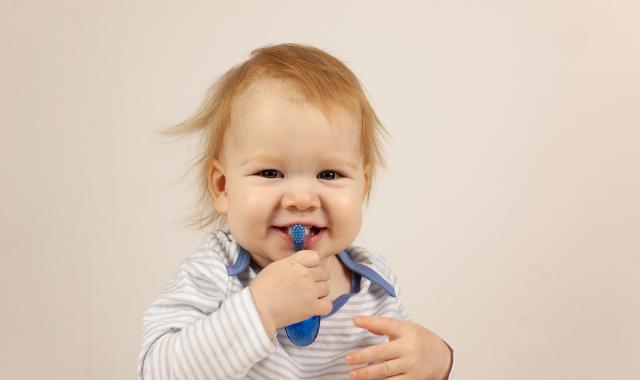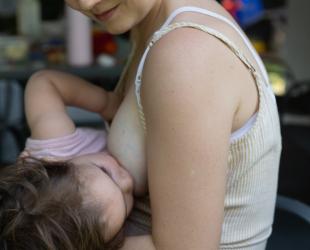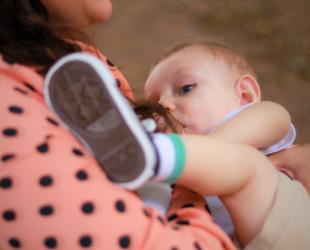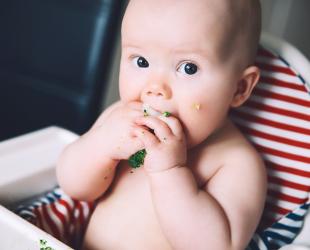Been told that breastfeeding causes tooth decay?
Find out what the research says.

It's normal and common for children to breastfeed to sleep and to breastfeed through the night. However, many parents are told this is bad for their teeth.
There seem to be a few reasons for this:
Research studies being poorly designed.
Results of research being misunderstood.
Lack of knowledge about how babies take in and swallow breastmilk.
What does the research say?
The research into breastfeeding and oral health is still evolving. Overall, studies have shown that breastfeeding up to 12 months protects against tooth decay.
Results about longer durations of breastfeeding are mixed. It is sometimes suggested that babies who breastfeed longer than 12 months are more likely to have decay. However, this suggestion is based on studies that didn’t take into account how much sugary foods and drinks the children also had. We know that sugary foods increase the risk of tooth decay, so a diet high in sugar is more likely to be the cause than breastfeeding.
A 2020 study found that the risk of tooth decay was not linked to breastfeeding beyond 12 months. Higher rates of tooth decay were found in children from families with low socioeconomic status and those who ate a lot of sugary foods and drinks.
Another recent study found no link between breastfeeding beyond 24 months and tooth decay in children living in areas where the drinking water has added fluoride. This suggests that giving young children water containing flouride can reduce the risk of tooth decay.
Overall, the research shows that when babies start eating other foods and drinks, some of which are high in sugars, this is what contributes to tooth decay, rather than breastfeeding. Experts agree that good dental hygiene (such as regular toothbrushing) and healthy eating habits are the most important ways to protect the oral health of young children.
What about breastfeeding overnight?
You may also have heard that frequent nighttime breastfeeds increase the risk of tooth decay. There is no good quality research to support this idea.
There is no need to limit your baby's nighttime breastfeeds to protect them against tooth decay. Instead, focus on cleaning your baby's teeth each day. When they begin eating other foods (from around 6 months), choose foods without lots of added sugar.
Could breastmilk protect against tooth decay?
Some research suggests that breastfeeding may actually protect against tooth decay, while formula may contribute to tooth decay.
Antibodies in breastmilk may help to reduce the growth of bacteria in the mouth (including Streptococcus mutans, the bug that causes tooth decay).
Lactoferrin, a protein in breastmilk, actually kills Streptococcus mutans.
S. mutans may not be able to use lactose, the sugar found in breastmilk, as easily as sucrose that is found in some formulas.
Formula has the potential to cause tooth decay. It may damage tooth enamel, significantly reduce pH (make it acidic) and support the growth of bacteria.
Breastfeeding is different to bottle feeding
There is a very big difference between sucking on a bottle and sucking on the breast.
- When a baby bottle-feeds, the milk comes out into the front of their mouth and settles around their teeth. If they fall asleep with a bottle in their mouth, the teat may slowly leak any milk left in the bottle into their mouth.
- When a baby breastfeeds, the nipple is pulled into the back of their mouth and the milk passes straight into their throat, causing them to swallow. No milk settles around their teeth. When a baby falls asleep at the breast and stops sucking, the flow of milk stops. This means no milk is left in their mouth.
This goes against the idea that being breastfed to sleep causes tooth decay. However, it is important not to allow your baby to fall asleep with a bottle.
Did our ancestors suffer tooth decay?
Archaeological studies show that tooth decay was very rare in prehistoric times, before high-sugar diets became more common. We can assume that these children were breastfed for long periods and most likely slept with their mums and breastfed throughout the night. Since tooth decay was rare, these studies provide more evidence that breastfeeding and breastmilk do not increase the risk of tooth decay.
So what does cause tooth decay in babies?
A number of factors increase the chances of tooth decay:
Sugar intake and poor eating habits of the family. Limit your child’s intake of sugary foods and drinks. Drink fluoridated tap water.
Bacteria (Streptococcus mutans) entering a baby’s mouth. Parents and others can give this germ to the baby without knowing it. This can happen by kissing them on the mouth, sharing a toothbrush, drink or spoon with them, or by sucking on baby's dummy thinking this is a quick way to clean it. Running it under a tap would be a safer option.
Lack of saliva. Saliva reduces the risk of tooth decay because it helps to wash sugars from the teeth and also reduces acidity. Saliva flow naturally reduces during sleep. Saliva flow may also be lower if a child was born early, has asthma or diabetes, or if they are using some medicines.
Poor oral and overall hygiene of the family. No matter how your baby is fed, it's important to clean their teeth properly (twice a day) once their teeth begin to appear. Take your child for regular dental check-ups.
Family genetics or health conditions during pregnancy. A baby's teeth begin to form long before they are born. In some cases, children are born with weak tooth enamel or other defects that increase their risk of tooth decay.
Mum smoking during pregnancy.
Other conditions. These include low birth-weight (including prematurity), malnutrition, asthma, recurrent infections and chronic diseases.
As breastfeeding is so important for your health and your child’s health, it's important to know the facts about tooth decay. It’s okay to breastfeed your baby to sleep for as long as you and your child desire.
At the same time, it is also important to reduce the risk of tooth decay. Clean your child’s teeth carefully, drink fluoridated water, avoid sugary foods and drinks and have regular dental check-ups.
- Arnold R, Cole M, & McGhee 1977. A bactericidal effect for human lactoferrin. Science, 197(4300):263–265.
- Berkowitz R 1996, Etiology of nursing caries: a microbiologic perspective. Public Health Dent 56:51–54.
- Bowen WH 1998, Response to Seow: biological mechanisms of early childhood caries. Community Dent Oral Epidemiol 26(1 Suppl):28–31.
- Cui L, Li X, Tian Y, et al 2017, Breastfeeding and early childhood caries: a meta-analysis of observational studies. Asia Pac J Clin Nutr 26(5):867–880.
- Devenish G, Mukhtar A, Begley A, Spencer AJ, Thomson WM, Ha D, Do L, Scott JA 2020, Early childhood feeding practices and dental caries among Australian preschoolers. Am J Clin Nutr 111(4):821–828.
- Erickson PR, McClintock KL, Green N, et al 1998, Estimation of the caries-related risk associated with infant formulas. Pediatr Dent 20:395–403.
- Erickson PR, Mazhari E 1999, Investigation of the role of human breast milk in caries development. Pediatr Dent 21:86–90.
- Ha DH, Spencer AJ, Peres KG, Rugg-Gunn AJ, Scott JA, Do LG 2019, Fluoridated Water Modifies the Effect of Breastfeeding on Dental Caries. J Dent Res 98(7):755–762.
- Iida H, Auinger P, Billings RJ, Weitzman M 2007, Association between infant breastfeeding and early childhood caries in the United States. Pediatrics 1(120):e944 -e952.
- Palmer B 1998, The influence of breastfeeding on the development of the oral cavity: a commentary. J Hum Lact 14:93–98.
- Palmer B 2000, Breastfeeding and infant caries: no connection. ABM News and Views, The Newsletter of The Academy of Breastfeeding Medicine 6(4):27 & 31.
- Ribeiro NM, Ribeiro MA 2004, Breastfeeding and early childhood caries: a critical review. Jornal de Pediatria 80(5 Suppl):S199–S210.
- Rugg-Gunn A, Roberts GJ, Wright WG 1985, Effect of human milk on plaque pH in situ and enamel dissolution in vitro compared with bovine milk, lactose, and sucrose. Caries Res 19:327–334.
- Tham R, Bowatte G, Dharmage SC, et al 2015, Breastfeeding and the risk of dental caries: a systematic review and meta-analysis. Acta Paediatr 104(467):62–84.


